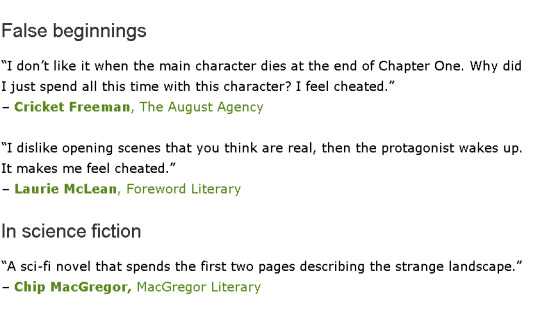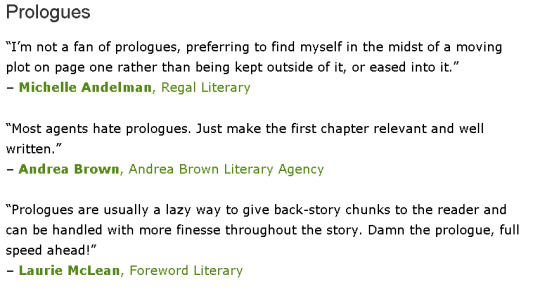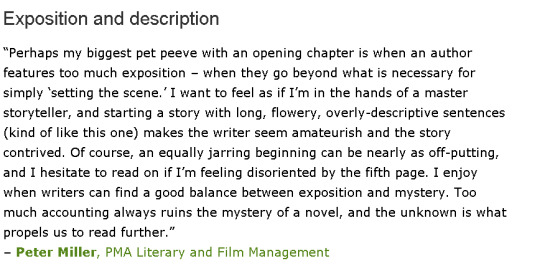Photo

Rough work, but work nonetheless.
8 notes
·
View notes
Text
The Item Dinkus
My current project #PhantomGradient, is a neo-noir fantasy that follows players of a virtual reality game, who use it as an escape and get wrapped up in mysterious circumstances.
In lieu of the dinkus, I'm using item stat blocks with their flavor text to break up the scenes and give a bit of extra insight into the game's world. Usually, they will have something to do with the surrounding scenes.
It evokes the kind of elements that populate loading screens, especially the likes of FromSoftware titles. I just thought it’d be a fun little way to toss in some more world building in the background.
(please excuse if this is a mess, I’m getting used to things)








1 note
·
View note
Note
Hello! Would you mind doing an example of not using filter words in a first person point of view? While I know that you can just switch out the pronouns for I/me/my, I just want to see it in action and when you should (and shouldn't) use the filter words. Thank you!
Hi there! I would love to! I think I’ll start out with an example with filter words and then cut out the filter words to show you the difference.
For those of you who haven’t seen my post on Filter Words.
Now, for the example:
I felt a hand tap my shoulder as I realized I had made a huge mistake. I knew the consequences would be unsettling, but I had no other choice. I saw the light of my desk lamp bounce off of the officer’s badge before I had even turned around. It seemed like I always found my way into trouble.
It was the first thing off the top of my head, so it’s a bit rough sounding….
Now for without filter words (And a bit of revision):
A hand tapped my shoulder as it dawned on me: I had just made a huge mistake. The consequences would be unsettling if I didn’t get out of this mess, but I had no other choice. The light of my desk lamp bounced off of the officer’s badge. I always found my way into trouble.
By taking out filter words, you get right to the point.
I’d also like to add a few more notes that I didn’t have the chance to post previously.
Some Examples of Filtering:
I heard a noise in the hallway.
She felt embarrassed when she tripped.
I saw a light bouncing through the trees.
I tasted the sour tang of raspberries bursting on my tongue.
He smelled his teammate’s BO wafting through the locker room.
She remembered dancing at his wedding.
I think people should be kinder to one another.
How can you apply this?
Read your work to see how many of these filtering words you might be leaning on. Microsoft Word has a great Find and Highlight feature that I love to use when I’m editing. See how you can get rid of these filtering words and take your sentences to the next level by making stronger word choices. Take the above examples, and see how they can be reworked.
FILTERING EXAMPLE: I heard a noise in the hallway.
DESCRIBE THE SOUND: Heels tapped a staccato rhythm in the hallway.
FILTERING EXAMPLE: She felt embarrassed after she tripped.
DESCRIBE WHAT THE FEELING LOOKS LIKE: Her cheeks flushed and her shoulders hunched after she tripped.
FILTERING EXAMPLE: I saw a light bouncing through the trees.
DESCRIBE THE SIGHT: A light bounced through the trees.
FILTERING EXAMPLE: I tasted the sour tang of raspberries bursting on my tongue.
DESCRIBE THE TASTE: The sour tang of raspberries burst on my tongue.
FILTERING EXAMPLE: He smelled his teammate’s BO wafting through the locker room.
DESCRIBE THE SMELL: His teammate’s BO wafted through the locker room.
FILTERING EXAMPLE: She remembered dancing at his wedding.
DESCRIBE THE MEMORY: She had danced at his wedding.
FILTERING EXAMPLE: I think people should be kinder to one another.
DESCRIBE THE THOUGHT: People should be kinder to one another.
See what a difference it makes when you get rid of the filter? It’s simply not necessary to use them. By ditching them, you avoid “telling,” your voice is more active, and your pacing is helped along.
The above list is not comprehensive as there are many examples of filtering words. The idea is to be aware of the concept so that you can recognize instances of it happening in your work. Be aware of where you want to place the energy and power in your sentences. Let your observations flow through your characters with immediacy.
Ok, sorry for the lengthy answer, I know you just wanted an example…. sorry!
If you have any questions, feel free to ask at my ask box
69K notes
·
View notes
Text
How to Write a Synopsis
Back when I was doing my MA program, I typed up a guide to writing query letters. It’s the post from this blog that I’m most proud of: a thorough step-by-step guide that combines days and weeks of research, dozens of sources, into a neatly packaged in an 1800 word post.
And I have to admit, I didn’t write it for tumblr. I wrote it because I was taking a publishing class, and as part of that class, I needed to write a query letter and I wanted to make sure I wrote a damn good one.
Now, I need to write a synopsis for my literary agents, and I need this to be damn good, too, so I thought I would make a similar post, making a similar post not only for my own sake, but for you as well.
But first…
What is a synopsis?
A synopsis is a 1-2 page summary of the events that transpire in a book, either proposed or already written. It’s used to give people who haven’t read your book a quick overview, so they know the story that’s being told in the book without having to read it.
When is a synopsis necessary?
Some literary agents request synopses along with query letters. More often, they’re used slightly later on in a writer’s career, when they have an agent or an editor and they need to submit a proposal for a new idea or project. A synopsis can also be used later on, in situations that don’t involve the author. For instance, when an editor pitches the book to the marketing and publicity team, who may not have time to read every book they’re working on. Unlike a query letter, the book doesn’t necessarily have to be written when you’re submitting its synopsis.
Basic Style
The job of a synopsis is to lay out the story with little fuss and no frills. They let the person you’re pitching know what they’re going to find in that giant stack of pages on their desk or in that obscenely long Word document (or else in the Word doc they’ll eventually receive).
Most professional synopses follow these rules:
They’re told in third person
They’re told in present tense
Characters’ names are CAPSLOCKED at first mention.
They are double spaced.
They tend to avoid descriptions longer than this sentence.
They focus on the central conflict and the protagonist’s emotional journey
They spoil the ending
They should be 500 words or less. (That is 1 page single-spaced, 2 pages double-spaced.)
HOW TO WRITE YOUR SYNOPSIS
The plot
Writing your synopsis, you have one goal: to tell a 50,000-100,000 word story in 500 words. It can be a little difficult to do this right. A great way to do this is to identify the key turning points in your protagonist’s story.
Do you remember those little plot roller coasters you’d make in elementary school? They’d usually be pointy witch’s-hat shaped things labeled with the terms: “beginning, rising action, climax, falling action, and resolution.”
Those turning points are the events you should be including in your synopsis.This is the structure you want to emphasize to your reader. You want to make abundantly clear that your story works like a story, that the events of your book have a beginning, a middle, and an end, that there’s an intriguing beginning, an exciting climax, a satisfying conclusion. You don’t want to just list out the events of your novel, but highlight the function of those events. X moment is important because it’s the inciting incident, the moment that takes the protagonist from their normal life and throws them into the story.
There are tons of great story roadmaps out there, that go into more specific story elements. The Hero’s Journey is the most famous example of a detailed, and mostly universal, story structure. There’s also the three-act structure that’s famous among screenwriters.
Find a structure that fits your story the best and use that to identify the events of your story that need to make it into your synopsis. I’ll link to different sources at the bottom of this post that will give you variations of story structure.
If you can correlate key scenes in your novel to the descriptions of these plot points, you’ll find an easy roadmap to navigating the many events of outlining your novel.
Your protagonist’s journey
Your protagonist is the heart of your story, and should be the heart of the synopsis, too. The protagonist’s emotional journey may not string all of these plot points together, but it’s going to be what makes them matter to the reader. The human element of your story has to be represented in your synopsis.
There’s no room for long descriptions, so you’ll have to be smart about finding a few terms that not only tell your reader who the character is, but what their story will be. For instance, if your story is about someone trying to get their critically-panned paintings in the Museum of Modern Art by breaking into the museum and installing the pieces themselves, you may want to introduce them with a sentence that begins like so: “When IGNATIUS, an ambitious and untalented struggling artist, discovers his work is rejected from yet another gallery…”
In addition to these descriptive terms, you should spell out what your protagonist wants (or wants desperately to avoid) and their stake in the events of the story.
Along the way, tell us how these key aspects of their persons change due to the events of the story, or else how they influence the events of the story. Tell us about how after raving reviews for his DIY MoMA exhibit came in, Iggy realized that though he still liked painting, his talents actually lay in performance art. Untalented to talented, struggling to successful, all because his ambition pushed him to try new and daring things.
Tips:
As in query letters, you only name the most important characters and locations outright. If you’re writing a synopsis for Harry Potter, you’ll want to use Harry’s name in the query, but most other people and places can be referred to by their function in the novel. Ex: Aunt Petunia and Uncle Vernon can be “his cruel relatives.” Hermione and Ron can be “his friends.” Even Hogwarts can be a “school for people with magical abilities.” This makes it easier for a reader to understand what’s going on in your story. Too many names in such a small amount of space can be overwhelming.
All telling, no showing. This is one piece of writing where you’ll want to tell, instead of show. You need to get to your point as quickly, as clearly, and concisely as possible; this isn’t the place for creative storytelling.
Oftentimes, synopses are given along with other materials, such as pitch letters and sample pages. While a synopsis should be captivating in-so-far that it’s well told, and it should maybe be a little stylish, being captivating and stylish aren’t its main goals. Additional materials like sample pages and pitches have more room for creative flourishes and can do a better job of selling the story, while the synopsis focuses on telling it.
Your synopsis should show that you know how to tell a story. While a synopsis doesn’t sell a story like a query, it should still illustrate the fact that you have an interesting, unique and well-structured plot. When finished, your reader should be able to think to themselves “that’s a good story. I want to read that.”
Your first draft will be too long. Your first draft of a synopsis will always be at least a page or two longer than it should be. Identify the sentences and paragraphs where you explain why a thing happens and ax them. Identify sentences where you repeat yourself and ax them. Identify descriptors that aren’t vital to understanding of the story and ax them. Once you make your first painful cuts and see that the story still makes sense without those things, you’ll start to get a better understanding of what can and cannot be taken out of your synopsis.
Bibliography:
6 Steps for Writing a Book Synopsis
How to Write a 1 Page Synopsis
The Hero’s Journey
Learn How to Write a Synopsis Like a Pro
How to Write a Novel Synopsis
The Secrets of Story Structure
Three Awesome Plot Structures for Building Bestsellers
7 Ways Write Plot Outline
Synopsis for “Bill and Ted’s Excellent Adventure”
How to Plan Your Novel Using a 3 Act Structure - ex. “The Hunger Games”
Story Structure by Plot Point for “Raiders of the Lost Ark”
8K notes
·
View notes
Text
I find it kinda odd how people talk about writing “flawed” characters like the flaws are an afterthought
Like “cool cool we’ve got this perfect hero now to just sprinkle on some Irritability and Trust Issues then microwave for 6 minutes on high until Done”
But I’ve personally found it feels a lot more useful to just… think of the flaws as the Good Traits except bad this time
The protagonist is loyal? Maybe that means they have a hard time recognizing toxic relationships and are easily manipulated by those they want to trust
The hero is compassionate? Maybe they work too hard and overextend themselves trying to help people and then they refuse to ask for help when they need it themselves for fear of burdening others
They’re dedicated to their ideals? Maybe they’re also too stubborn to know when to quit and they have trouble apologizing for their mistakes
If they’re creative, they can also be flighty. If they’re confident, they can be arrogant. If they’re brave, they might be reckless. If they’re smart, they could be condescending. Protective can become controlling, and someone who’s carefree could very well also be emotionally distant
In my opinion, the best “flaws” aren’t just added on afterwards. The best flaws are baked in deep, ‘cause they’re really just virtues turned upside down
59K notes
·
View notes
Text
Avoiding Info-Dumps and Boring Exposition
Exposition can be many things in a story: character backstory, definitions, history, etc., and it’s a necessary part of any narrative. Yes, it’s “telling” instead of “showing”, but there are times when you have to “tell” to aid with pacing, detail, and most important of all, reader comprehension.
Your readers don’t know what’s in your head; they know what’s on the paper.
So you have to give exposition (though some stories will be heavier than others) and you have to do it well or your readers won’t care enough to pay attention. Exposition is not something to just shove aside or box away with an “icky” label on it because it affects the quality of the story as a whole. If you write it well, it can enhance the story rather than detract from it– which should be the goal of any element of writing.
Learning to write better exposition makes you a better writer in general, and part of writing better exposition means understanding the main problems and the solutions.
What is an “info-dump?”
Simply put, “large amounts of information that don’t directly matter to the moment of the scene”. They can be seen as reflections on backstory or facts about the characters or world, specifically in large quantities.
Three commonly seen methods of info-dumping are the chapter-start block, the monologuing narrator, and the rambling narrator. (Note: the names are not official, just what I personally call them.)
The chapter-start block is when the writer starts each new scene or chapter by giving all the backstory and relevant information at the very beginning, then running off and writing the scene while hoping the reader can remember everything. That kind of writing is often the result of “I want to get to the interesting story so I’ll take care of the boring setup first”. Guess what, your readers agree. They don’t care about your exposition because you’re presenting it in a boring way, and now they may not be able to get into the actual story because they don’t understand it as well as they could. While starting a new chapter or scene with exposition isn’t necessarily bad, large qualities of information are.
The monologuing narrator is exactly what it sounds like: the narrator talks at the reader for an extended amount of time. This info-dump can be found at any point of a scene, but it still gives way too much information at once. It also sometimes presents its own problem of timing, because the narrators shouldn’t be “zoning out to think about things” in the middle of a scene unless that detail weighs very heavily on them. Narration shows train of thought and the monologuing narrator usually needs to chill. (There are times when monologues are acceptable, but writing one primarily to deliver background information is not acceptable use.)
Similar to the monologuing narrator in that character thought takes over the scene, the rambling narrator has an additional problem in that they often go off-topic or into detail that isn’t necessary for the moment. While the occasional “ramble” can be used to show character personality, a writer can’t expect readers to actually learn from that ramble. Large amounts of information aren’t easy to digest, especially when everything is presented at the same time.
Avoiding the info dump.
Keep all information in context.
If your scene is about a character going for a job interview, don’t start mentioning their dead sister unless there’s an important connection that’s immediately relevant. Only reveal what makes sense to reveal within the events and flow of the scene. It’s true that the lines can get blurry when you’re working with a story that has interconnected elements, but early on you want to keep exposition in careful balance with the forward momentum of the narrative. Later on, once your readers are already hooked, you can ease up a little on the withholding and start exploring details– but keeping things contextual will still always be an important guideline to follow.
Use prompts for information.
Prompts are things like people, situations, in-story objects or moments that ‘remind’ the narrator of the piece of exposition. Part of avoiding never-ending, rambling, or irrelevant exposition involves using setting and plot to prompt information from the narrator’s mind, rather than just dump it all out at once. Prompts help shows connections and grant relevance by tying the information into the current scene and moment.
Narrator perspective guides exposition.
The narrative point of view helps ground the reader’s new information by presenting it through the eyes of the person they are following. This does mean that your audience can get biased info, but that’s part of the nature of storytelling; it’s not a documentary. Similar to using prompts, narrator perspective helps guide exposition by presenting information that’s relevant to the narrator and their personal story.
Use a “weaving” techniques to avoid giant blocks of text.
It’s best to weave your exposition between dialogue, thought, and action to write in a way that’s engaging and informative. Think of it like being in a class. If your professor spends the whole hour giving a lecture off slides, chances are you might be overwhelmed at times and tune out a bit. If they introduce an activity and give smaller lectures to explain the science behind the steps, then you are more likely to pay attention and not feel as overwhelmed. Writing works the same way. The best results are typically found when the activity (story events that are “shown”) are blended with lecture (backstory/exposition that is “told”).
Generally, you want to practice a balance of dialogue, action, and exposition. Some scenes may be heavier in one category than the other, and that’s okay, but a balance of those elements helps with overall pacing and keeps readers engaged and more likely to learn.
Not everything needs explaining.
While there are certainly pieces of information that you have to “tell” for the story to make sense, there are times when “showing” can cut down on lengthy exposition and make for a more engaging narrative. Why have your narrator explain/“tell” about how they don’t get along with their mother when you can show the poor relationship through the way they interact? And don’t just keep it isolated to one scene, unless the story calls for it, because some parts of exposition stretch beyond individual moments and affect the entire story. It may be tempting to try and directly point everything out at once, but that’s a quick road to long-winded scenes of exposition that leave your characters and their plot behind.
Writing more interesting exposition.
For exposition to be interesting, it needs meaning, and meaning can be granted through context and the relevance to the current scene when the reader is not yet fully invested in your story. When presenting exposition, there are a few things that can be kept in mind:
Try and convey something about the character’s personality with the way they give information. We all have a personal take on things and so will a character, so let that personal perspective show via tone, word choice, fact detail, etc.
An interesting voice can carry a story decently far, especially when it comes to giving background information. It’s possible to have a character that sticks only to the facts, but without a bit of emotion behind that exposition, it can get dry really quickly. Your character needs to interact with their world, not be a robot that gives impartial explanations of everything.
If you repeat information, which is needed for anything with heavy detail, present it in different ways or at least don’t copy the wording.
Build on detail over time, and make sure to apply that detail to the scene to allow for contextual learning.
Tension tends to create reader interest. Giving exposition during tense moments can force a reader to learn on the spot– as long as it doesn’t distract from the scene.
Pace yourself. Part of boring exposition is tied into how much is presented at once, and while info-dumps can be identified and avoided with relative ease, you still have to watch how much information is being presented in a scene or chapter. Even if you “weave” it correctly, there’s still a chance that it’s too much for a reader to reasonably digest.
Good luck with your work and if there are any questions, drop them in my ask box and I’ll see how I can help. Just please read my Rules and Considerations page to make sure I’m the best resource, and consider a Gift of Coffee to grant me an energy boost, if you’re feeling generous.
2K notes
·
View notes
Text
“This is your daily, friendly reminder to use commas instead of periods during the dialogue of your story,” she said with a smile.
576K notes
·
View notes
Photo





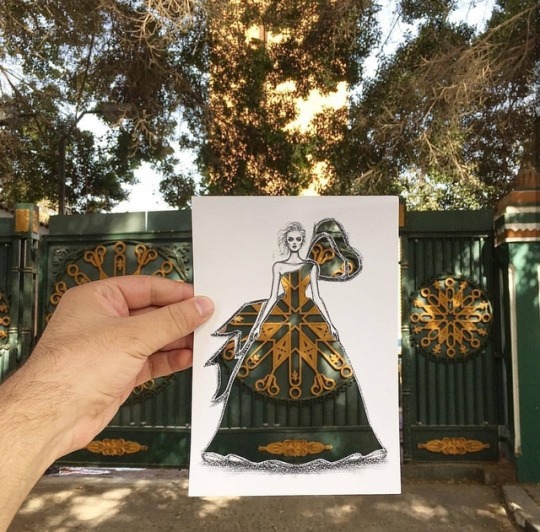
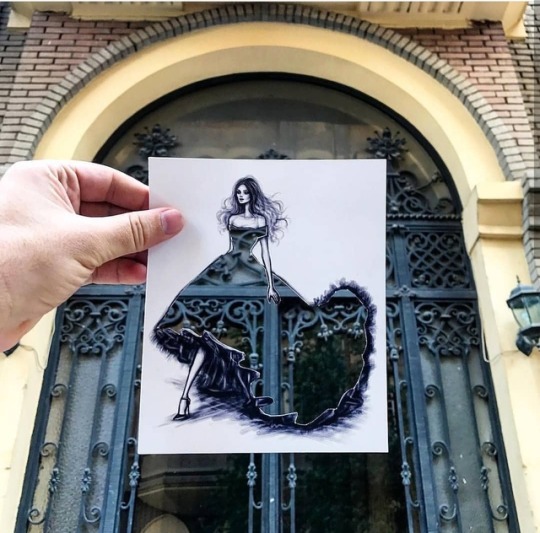
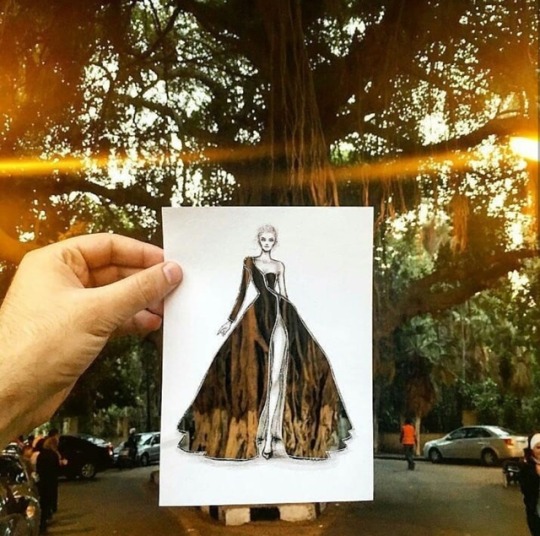

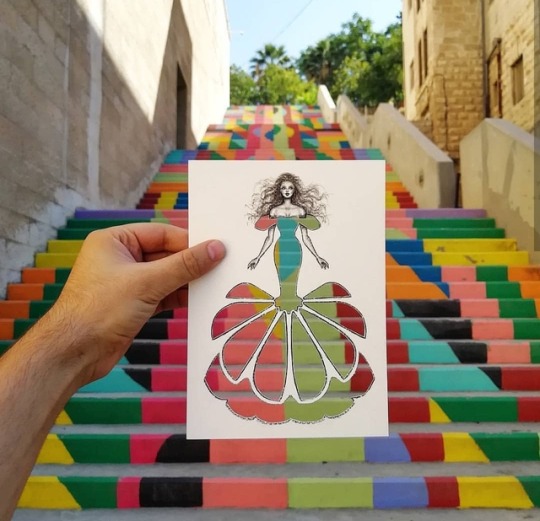
Art byBayilik Paneli IG: @shamekhbluwi Instagram: @artwoonz
107K notes
·
View notes
Text
Synonyms For Very
This is a masterlist of words that you may use alongside the word very, very being one of the most common words that are used when writing. I hope this helps you as much as it helps me in our writing seem more sophisticated and unique.
A:
Very accurate - exact Very afraid - fearful Very angry - furious - livid Very annoying - exasperating
B:
Very bad- atrocious Very beautiful- exquisite Very big- immense Very boring- dull Very bright- luminous Very busy- swamped
C:
Very calm- serene Very careful- cautious Very cheap- stingy Very clean- spotless Very clear- obvious Very clever- intelligent Very cold- freezing Very colourful/colorful- vibrant Very competitive- cutthroat Very complete- comprehensive Very confused- perplexed Very conventional- conservative Very creative- innovative Very crowded- bustling Very cute- adorable
D:
Very dangerous- perilous Very dear- cherished Very deep- profound Very depressed- despondent Very detailed- meticulous Very different- disparate Very difficult- arduous Very dirty- filthy Very dry- arid Very dull- tedious
E:
Very eager - keen Very easy - effortless Very empty - desolate Very excited - thrilled Very exciting - exhilarating Very expensive - costly
F:
Very fancy- lavish Very fast- swift Very fat- obese Very friendly- amiable Very frightened- alarmed Very frightening- terrifying Very funny- hilarious
G:
Very glad- overjoyed Very good- excellent Very great- terrific
H:
Very happy- ecstatic Very hard- difficult Very hard-to-find- rare Very heavy- leaden Very high- soaring Very hot- sweltering Very huge- colossal Very hungry- ravenous Very hurt- battered
I:
Very important - crucial Very intelligent - brilliant Very interesting - captivating
J:
Very judgemental - prejudice
K:
L:
Very large- huge Very lazy- indolent Very little- tiny Very lively- vivacious Very long- extensive Very long-term- enduring Very loose- slack Very loud- thunderous Very loved- adored
M:
Very mean- cruel / ruthless Very messy- slovenly
N:
Very neat- immaculate Very necessary- essential Very nervous- apprehensive Very nice- kind Very noisy- deafening
O:
Very often- frequently Very old- ancient Very old-fashioned- archaic Very open- transparent
P:
Very painful- excruciating Very pale- ashen Very perfect- flawless Very poor- destitute Very powerful- compelling Very pretty- beautiful
Q:
Very quick- rapid Very quiet- hushed
R:
Very rainy- pouring Very rich- wealthy
S:
Very sad- sorrowful Very scary- chilling Very serious- grave Very sharp- keen Very shiny- gleaming Very short- brief Very shy- timid Very simple- basic Very skinny- skeletal Very slow- sluggish Very small- petite Very smart- intelligent Very smelly- pungent Very smooth- sleek Very soft- downy Very sorry- apologetic Very special- exceptional Very strong- forceful Very stupid- idiotic Very sure- certain Very sweet- thoughtful
T:
Very talented- gifted Very tall- towering Very tasty- delicious Very thirsty- parched Very tight- constricting Very tiny-minuscule Very tired- exhausted
U:
Very ugly- hideous Very unhappy- miserable Very unusual- incongruous Very upset- distraught
V:
W:
Very warm- hot Very weak- frail Very well-to-do- wealthy Very wet- soaked Very wide- expansive Very willing- eager Very windy- blustery Very wise- sage Very worried- distressed
X:
Y:
Z:
A/N: If you know of any more words I can add please message me.
157K notes
·
View notes
Text
People in badly written fantasy stories will usually talk about the major historical events of their world and how magic has affected the lives of everyone, but ask a person in the real world to describe the effects of WWI and the invention of the combustion engine on modern life and they’d probably couldn’t tell you.
101K notes
·
View notes
Text
I was in an advanced fiction writing class last semester and I gotta ask: why are people so hellbent on killing innocent characters? I was going to write this story about a warrior protecting her daughter and several people wanted me to kill the kid. One guy was like “You gotta kill that daughter dude.” like…WHY? Why is it so important that I kill this child? Because it makes things more tragic? Why does it have to be tragic?
TRAGIC DOES NOT EQUAL GOOD STORYTELLING
699 notes
·
View notes
Photo
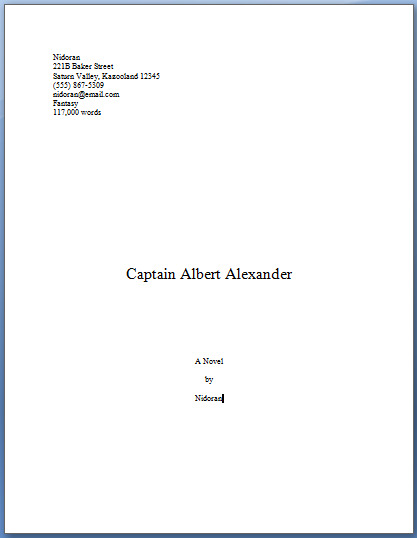
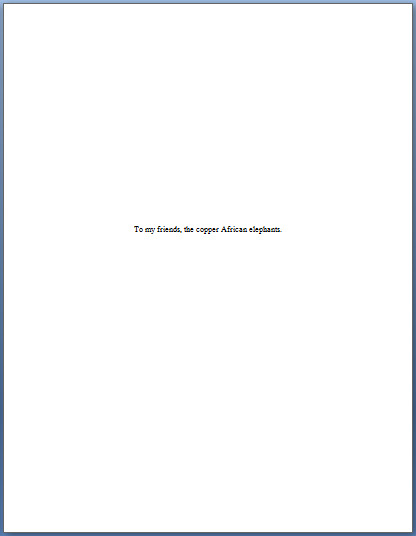

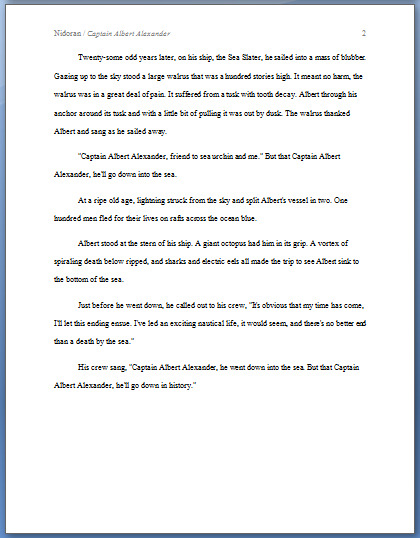
Formatting your Manuscript
If you’re planning on one day turning your manuscript in to literary agents and publishing houses, you need to make sure it’s formatted correctly. In many cases, your manuscript will be skipped over if it isn’t done to industry standard, so here’s the basics that you’ll need if you don’t want to be ignored. Before I get started, please know that this is aimed specifically at fiction manuscripts. If you’re writing non-fiction or a memoir, the expectations will be different, so it would be wise to Google what you need.
The Basics
Make sure your font is 12 point Times New Roman, Courier New, or Arial. These are the only three fonts you are allowed to pick from.
Your spacing should be 1 inch on all sides of the text. This is the default on most word processors, but double check your settings just to be sure.
Your text should be double spaced.
All of your indentations must be a half inch. Do not press indent. Instead, drag over the top arrow on the ruler to have every new paragraph automatically indent.
The Title Page
The top left-hand corner of your title page will have all your personal information. They want to see your name, address, phone number, e-mail address, the novel’s genre, and word count.
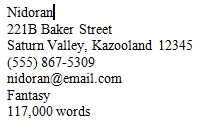
Your novel’s title is allowed to be between 20-24 point font if you want. Bold is also an option, but not necessary.
The title will appear halfway down the title page.
“A novel by [your name]” will be about three quarters of the way down the page.
The Next Pages
If you have a dedication, it will be on its own page.
If you have some sort of verse or quote, those will also need their own pages.
Do not include a page for acknowledgements.
The Chapters
Chapter titles will be 12 point font. No bolding or italics.
Chapters will start from one quarter to halfway down the page.
An easy way to format chapter headings is to press enter five or six times
Make sure you always start your chapters the same way every time.
When you start a new chapter, make sure you use a page break to bump the new chapter onto a new page. This will keep it in place so that it will never budge, no matter how much you cut out or add to the previous chapter.
Page Numbers
Page numbers will start with 1 on Chapter 1 of your manuscript. Page numbers will not appear on the title page or dedication page.
Page 1 will be labeled in the footer of Chapter 1. It should be centered.
Page 2 will be in the header of the next page.
From page 2 onward, your headers will be labeled like this:

If you insert a section break after the title and dedication pages, it will make it easier to insert the page numbers.
For the most part, this is the most important of what you’ll need to know for formatting your manuscript. I used this video as reference, so I’m trusting everything it says is true because it was made by an author who has several novels published, and because it was uploaded this year, it should be up to date.
But just remember, whenever you go to turn in a manuscript, make sure you check the website of the agent or publisher you’re trying to contact. They might have specifications that differ with the ones stated in this video, and you should always do whatever you can to abide by what they want.
74K notes
·
View notes
Text
The day before he went missing, my friend sent me a file with an unusual extension. When I googled it, I found that it was apparently to be opened in a 3D design program. It wasn’t free, so I downloaded a pirated copy and got it running. The file took a while to open, but when it did, I saw the city of Paris in a quarter window on my desktop.
My friend had always mentioned his ‘top secret project’, right back from when we started chatting off of a group chat. He never let on what the project was, and he always quickly changed the topic if I probed deeper. Well, this was it, I realised. He was building a 1:1 model of Paris in a 3D modelling program.
The actual visuals were all over the place. What were supposed to be people looked very smooth-surfaced and missing a lot of the detail. Objects clipped into each other. Some walls were still untextured. And the strangest bit, perhaps, was that everyone was smiling.
That may not sound like an important detail at first. Smiling children, smiling office workers, smiling people at the park. All fairly normal. Then you really explore the place, and you find that it starts to get unnerving. A body lying in a pool of darkened blood, smiling. A woman being mugged by three hooded men, all four of them smiling. A car collision, and through the dark windows, you could see that the drivers and passengers were lying haphazardly, smiling.
I spent several hours exploring the city. I compared it to the real city of Paris, as it exists on Google Maps. The resemblance was actually direct. Enter Street View on Maps and you could see buildings, shops, even parked cars, all of which were recreated in detail.
And then I found the Play button in the corner of the program. When I first clicked on it, I’d zoomed out of the streets, and I couldn’t perceive any change, even though the 'animation’ was playing.
I zoomed in on a street and then hit the Play button. There were a few dozen character models, and they all collapsed to the ground. But not like ragdolls. They had weight to their bodies. The animation continued for several hours, with the smiling people lying on the ground, or wherever it was they fell.
The sun made its way from one end of the scene to the other, and darkness spread. Lights came on. The bodies stayed where they were. I kept skipping forward, until I found the bodies had disappeared. I skipped back and forth, trying to determine what happened to all the fallen bodies.
They just disappeared. One frame, they were all there. The next, they were all gone. The streets were empty and clean. The animation ended and looped back to the start, with the smiling people reappearing in the streets and shops. Then they collapsed again.
No one ever found my friend, in Paris or otherwise.
That’s because he was now on my hard drive, with an unusual file extension.
644 notes
·
View notes






